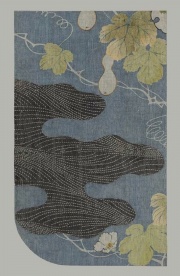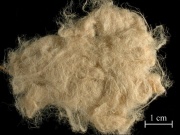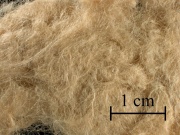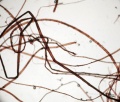Difference between revisions of "Ramie"
m (Text replace - "$$" to " ") |
|||
| (9 intermediate revisions by the same user not shown) | |||
| Line 1: | Line 1: | ||
| − | + | [[File:28.491-SC94227.jpg|thumb|Kyogen costume<br>MFA# 28.491]] | |
| − | + | == Description == | |
| − | |||
| − | |||
| − | |||
| − | |||
| − | |||
| − | |||
| − | |||
| − | |||
| − | |||
| − | |||
| − | |||
| − | |||
| − | |||
| − | |||
| − | |||
| − | |||
| − | |||
| − | |||
| − | |||
| − | |||
| − | |||
| − | |||
| − | |||
| − | |||
| − | |||
| − | |||
| − | |||
| − | |||
| − | |||
| − | |||
| − | |||
| − | |||
| − | |||
| − | |||
| − | |||
| − | |||
| − | |||
| − | |||
| − | |||
| − | |||
| − | |||
| − | |||
| − | |||
| − | |||
| − | |||
| − | |||
| − | |||
| − | |||
| − | |||
| − | |||
| − | |||
| − | |||
| − | |||
| − | |||
| − | |||
| − | |||
| − | |||
| − | |||
| − | |||
| − | |||
| − | |||
| − | |||
| − | |||
| − | |||
| − | |||
| − | |||
| − | |||
| − | |||
| − | |||
| − | |||
| − | |||
| − | |||
| − | |||
| − | |||
| − | |||
| − | |||
| − | |||
| − | |||
| − | |||
| − | |||
| − | |||
| − | |||
| − | |||
| − | |||
| − | |||
| − | |||
| − | |||
| − | |||
| − | |||
| − | |||
| − | |||
| − | |||
| − | |||
| − | |||
| − | |||
| − | |||
| − | |||
| − | |||
| − | |||
| − | |||
| − | |||
| − | |||
| − | |||
| − | |||
| − | |||
| − | |||
| − | |||
| − | |||
| − | |||
| − | |||
| − | |||
| − | |||
| − | |||
| − | |||
| − | |||
| − | |||
| − | |||
| − | |||
| − | |||
| − | |||
| − | |||
| − | |||
| − | |||
| − | |||
| − | |||
| − | |||
| − | |||
| − | |||
| − | |||
| − | |||
| − | |||
| − | |||
| − | |||
| − | |||
| − | |||
| − | |||
| − | |||
| − | |||
| − | |||
| − | |||
| − | |||
| − | |||
| − | |||
| − | |||
| − | |||
| − | |||
| − | |||
| − | |||
| − | |||
| − | |||
| − | |||
| − | |||
| − | |||
| − | |||
| − | |||
| − | |||
| − | |||
| − | |||
| − | |||
| − | |||
| − | |||
| − | |||
| − | |||
| − | |||
| − | |||
| − | |||
| − | |||
| − | |||
| − | |||
| − | |||
| − | |||
| − | |||
| − | |||
| − | |||
| − | |||
| − | |||
| − | |||
| − | |||
| − | |||
| − | |||
| − | |||
| − | |||
| − | |||
| − | |||
| − | |||
| − | |||
| − | |||
| − | |||
| − | |||
| − | |||
| − | |||
| − | |||
| − | |||
| − | |||
| − | |||
| − | |||
| − | |||
| − | |||
| − | |||
| − | |||
| − | |||
| − | |||
| − | |||
| − | |||
| − | |||
| − | |||
| − | |||
| − | |||
| − | |||
| − | |||
| − | |||
| − | |||
| − | |||
| − | |||
| − | |||
| − | |||
| − | |||
| − | |||
| − | |||
| − | |||
| − | |||
| − | |||
| − | |||
| − | |||
| − | |||
| − | |||
| − | |||
| − | |||
| − | |||
| − | |||
| − | | | ||
| − | |||
| − | |||
| − | |||
| − | |||
| − | |||
| − | |||
| − | |||
| − | |||
| − | |||
| − | |||
| − | |||
| − | |||
| − | |||
| − | |||
| − | |||
| − | |||
| − | |||
| − | |||
| − | |||
| − | |||
| − | |||
| − | |||
| − | |||
| − | |||
| − | |||
| − | |||
| − | |||
| − | |||
| − | |||
| − | |||
| − | |||
| − | |||
| − | |||
| − | |||
| − | |||
| − | |||
| − | |||
| − | |||
| − | |||
| − | |||
| − | |||
| − | |||
| − | |||
| − | |||
| − | |||
| − | |||
| − | |||
| − | |||
| − | |||
| − | |||
| − | |||
| − | |||
| − | |||
| − | |||
| − | |||
| − | |||
| − | |||
| − | |||
| − | |||
| − | |||
| − | |||
| − | |||
| − | |||
| − | |||
| − | |||
| − | |||
| − | |||
| − | |||
| − | |||
| − | |||
| − | |||
| − | |||
| − | |||
| − | |||
| − | [[Category:FRIL]] | + | A [[bast fiber]] obtained from the stems of plants from the nettle family, ''Boehmeria'' (formerly ''Urtica'') ''nivea'' and ''Boehmeria tenacissema'', native to tropical Asia. Ramie is a soft, fine fiber that has been used in China for [[paper]] and fabric since prehistoric times. Its use spread through Europe in the Middle Ages and it has been cultivated since the 1930s in China, Japan, Europe, South America, and the United States. Ramie is a white, durable fiber that is very lustrous and dyes well. Degummed ramie is almost pure cellulose and its fibers are stronger than [[cotton]], [[hemp]], and [[flax]]. It is used for twine, fishnets, sewing thread and fabric for clothing, summer suits, dresses, canvas, tablecloths, and upholstery. Ramie has also been used to produce strong paper for linings, banknotes, and cigarettes. The stiff, greenish-yellow fibers produced from hand-cleaning are called China grass. A Chinese fabric woven from ramie is called [[grass cloth]]. |
| − | [[ | + | [[File:Ramie_fibers_overall.jpg|thumb|Ramie]] |
| + | [[File:Ramie_fibers_det.jpg|thumb|Ramie]] | ||
| + | * For ramie fiber identification, see http://cameo.mfa.org/wiki/Category:FRIL:_Ramie | ||
| + | |||
| + | == Synonyms and Related Terms == | ||
| + | |||
| + | ''Boehmeria nivea; Urtica nivea; Boehmeria tenacissema''; China grass; rhea; grass cloth; rami; Chinese linen; Canton linen; grass linen; ramio (Esp.) | ||
| + | |||
| + | == Risks == | ||
| + | |||
| + | Resistant to mildew and insects. | ||
| + | |||
| + | == Physical and Chemical Properties == | ||
| + | |||
| + | Resistant to alkalis; damaged by acids. Fibers length = 15-20 cm (6-8 inches); Fiber width = 12-82 microns with a uniform thickness and blunt ends; Striactions are numerous and occasionally overlap to form x or v shapes; Moisture regain 12%. | ||
| + | |||
| + | Paper fiber type: non-woody/bast. Using transmitted light microscopy, fibers appear long, wide, and flat with a wide lumen. They may appear twisted (similar to [[cotton]]). Walls of fibers have pronounced longitudinal striations that are finer than [[flax]] or [[hemp]]. Appearance with [[Graff "C" stain]]: red due to high [[alpha cellulose]]. Average dimensions of fibers: length 120mm, width 50μm. Common pulping method: mechanical separation with alkaline processing. The long fibers impart strength to papers. | ||
| + | |||
| + | == Comparisons == | ||
| + | |||
| + | [[media:download_file_150.pdf|Properties of Natural Fibers]] | ||
| + | |||
| + | == Additional Images == | ||
| + | |||
| + | <gallery> | ||
| + | File:silverramielarge.jpg|Ramie | ||
| + | File:Ramie 40x striations.jpg|Ramie paper pulp stained with Graff "C" stain | ||
| + | Ramie 10x.jpg|Ramie paper pulp stained with Graff "C" stain | ||
| + | </gallery> | ||
| + | |||
| + | == Resources and Citations == | ||
| + | * G.Cook, ''Handbook of Textile Fibres:I. Natural Fibres'', 5th edition, Merrow Publishing Co., Durham, England, 1984. | ||
| + | * T.Collings, D. Miller, 'The Identification of Oriental Paper Fibers' ''The Paper Conservator'', vol 3, 1978. | ||
| + | * Hoechst Celanese Corporation, ''Dictionary of Fiber & Textile Technology'' (older version called Man-made Fiber and Textile Dictionary, 1965), Hoechst Celanese Corporation, Charlotte NC, 1990 | ||
| + | |||
| + | * ''The Dictionary of Paper'', American Paper Institute, New York, Fourth Edition, 1980 | ||
| + | |||
| + | * E.J.LaBarre, ''Dictionary and Encyclopedia of Paper and Paper-making'', Swets & Zeitlinger, Amsterdam, 1969 | ||
| + | |||
| + | * ''Identification of Textile Materials'', The Textile Institute, Manchester, England, 1985 | ||
| + | |||
| + | * ''Encyclopedia Britannica'', http://www.britannica.com Comment: ramie" [Accessed November 7, 2001]. | ||
| + | |||
| + | * Wikipedia: http://en.wikipedia.org/wiki/Ramie (Accessed Nov. 9, 2005) | ||
| + | |||
| + | * Matt Roberts, Don Etherington, ''Bookbinding and the Conservation of Books: a Dictionary of Descriptive Terminology'', U.S. Government Printing Office, Washington DC, 1982 | ||
| + | |||
| + | * R. J. Gettens, G.L. Stout, ''Painting Materials, A Short Encyclopaedia'', Dover Publications, New York, 1966 | ||
| + | |||
| + | * Rosalie Rosso King, ''Textile Identification, Conservation, and Preservation'', Noyes Publications, Park Ridge, NJ, 1985 | ||
| + | |||
| + | * Book and Paper Group, ''Paper Conservation Catalog'', AIC, 1984, 1989 | ||
| + | |||
| + | * Edward Reich, Carlton J. Siegler, ''Consumer Goods: How to Know and Use Them'', American Book Company, New York City, 1937 | ||
| + | |||
| + | * G.S.Brady, ''Materials Handbook'', McGraw-Hill Book Co., New York, 1971 Comment: p. 650 | ||
| + | |||
| + | * Art and Architecture Thesaurus Online, http://www.getty.edu/research/tools/vocabulary/aat/, J. Paul Getty Trust, Los Angeles, 2000 | ||
| + | |||
| + | * Website: www.fabrics.net | ||
| + | |||
| + | * Marja-Sisko Ilvessalo-Pfäffli. ''Fiber Atlas: Identification of Papermaking Fibers'' (Springer Series in Wood Science). Springer, 1995. | ||
| + | |||
| + | * Walter Rantanen. "Fiber ID Course." Integrated Paper Services. June 2013. Lecture. | ||
| + | |||
| + | *James P. Casey "Pulp and Paper: Chemistry and Chemical Technology Vol.1" Wiley-Interscience, 1980. | ||
| + | |||
| + | [[Category:Materials database]] | ||
Latest revision as of 12:46, 29 October 2020
Description
A Bast fiber obtained from the stems of plants from the nettle family, Boehmeria (formerly Urtica) nivea and Boehmeria tenacissema, native to tropical Asia. Ramie is a soft, fine fiber that has been used in China for Paper and fabric since prehistoric times. Its use spread through Europe in the Middle Ages and it has been cultivated since the 1930s in China, Japan, Europe, South America, and the United States. Ramie is a white, durable fiber that is very lustrous and dyes well. Degummed ramie is almost pure cellulose and its fibers are stronger than Cotton, Hemp, and Flax. It is used for twine, fishnets, sewing thread and fabric for clothing, summer suits, dresses, canvas, tablecloths, and upholstery. Ramie has also been used to produce strong paper for linings, banknotes, and cigarettes. The stiff, greenish-yellow fibers produced from hand-cleaning are called China grass. A Chinese fabric woven from ramie is called Grass cloth.
- For ramie fiber identification, see http://cameo.mfa.org/wiki/Category:FRIL:_Ramie
Synonyms and Related Terms
Boehmeria nivea; Urtica nivea; Boehmeria tenacissema; China grass; rhea; grass cloth; rami; Chinese linen; Canton linen; grass linen; ramio (Esp.)
Risks
Resistant to mildew and insects.
Physical and Chemical Properties
Resistant to alkalis; damaged by acids. Fibers length = 15-20 cm (6-8 inches); Fiber width = 12-82 microns with a uniform thickness and blunt ends; Striactions are numerous and occasionally overlap to form x or v shapes; Moisture regain 12%.
Paper fiber type: non-woody/bast. Using transmitted light microscopy, fibers appear long, wide, and flat with a wide lumen. They may appear twisted (similar to Cotton). Walls of fibers have pronounced longitudinal striations that are finer than Flax or Hemp. Appearance with Graff "C" stain: red due to high Alpha cellulose. Average dimensions of fibers: length 120mm, width 50μm. Common pulping method: mechanical separation with alkaline processing. The long fibers impart strength to papers.
Comparisons
Additional Images
Resources and Citations
- G.Cook, Handbook of Textile Fibres:I. Natural Fibres, 5th edition, Merrow Publishing Co., Durham, England, 1984.
- T.Collings, D. Miller, 'The Identification of Oriental Paper Fibers' The Paper Conservator, vol 3, 1978.
- Hoechst Celanese Corporation, Dictionary of Fiber & Textile Technology (older version called Man-made Fiber and Textile Dictionary, 1965), Hoechst Celanese Corporation, Charlotte NC, 1990
- The Dictionary of Paper, American Paper Institute, New York, Fourth Edition, 1980
- E.J.LaBarre, Dictionary and Encyclopedia of Paper and Paper-making, Swets & Zeitlinger, Amsterdam, 1969
- Identification of Textile Materials, The Textile Institute, Manchester, England, 1985
- Encyclopedia Britannica, http://www.britannica.com Comment: ramie" [Accessed November 7, 2001].
- Wikipedia: http://en.wikipedia.org/wiki/Ramie (Accessed Nov. 9, 2005)
- Matt Roberts, Don Etherington, Bookbinding and the Conservation of Books: a Dictionary of Descriptive Terminology, U.S. Government Printing Office, Washington DC, 1982
- R. J. Gettens, G.L. Stout, Painting Materials, A Short Encyclopaedia, Dover Publications, New York, 1966
- Rosalie Rosso King, Textile Identification, Conservation, and Preservation, Noyes Publications, Park Ridge, NJ, 1985
- Book and Paper Group, Paper Conservation Catalog, AIC, 1984, 1989
- Edward Reich, Carlton J. Siegler, Consumer Goods: How to Know and Use Them, American Book Company, New York City, 1937
- G.S.Brady, Materials Handbook, McGraw-Hill Book Co., New York, 1971 Comment: p. 650
- Art and Architecture Thesaurus Online, http://www.getty.edu/research/tools/vocabulary/aat/, J. Paul Getty Trust, Los Angeles, 2000
- Website: www.fabrics.net
- Marja-Sisko Ilvessalo-Pfäffli. Fiber Atlas: Identification of Papermaking Fibers (Springer Series in Wood Science). Springer, 1995.
- Walter Rantanen. "Fiber ID Course." Integrated Paper Services. June 2013. Lecture.
- James P. Casey "Pulp and Paper: Chemistry and Chemical Technology Vol.1" Wiley-Interscience, 1980.





